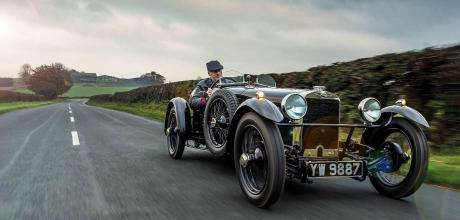1928 Bond 1.5-litre Super Sport
No, it’s not a Bugatti — it’s something considerably rarer. Mark Dixon drives the Yorkshire-built Bond, a unique survivor of one man’s dream.
Photography Jonathan Jacobs
THE BRIGHOSE BUGATTI
BOND SUPER SPORT
Driving Yorkshire's own wannabe Bugatti
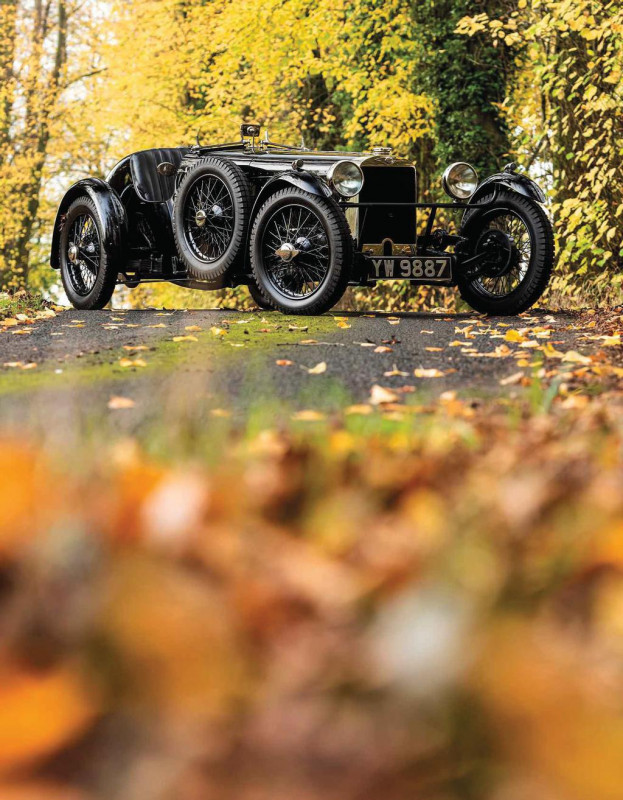
Above It had the looks, the performance, the big-name endorsement — but the Bond suffered the same fate as many other 1920s low-volume cars, killed by the Depression.
The West Yorkshire mill town of Brighouse is a long way from Molsheim in north-eastern France, both literally and metaphorically. Molsheim is famous for being the spiritual home of Bugatti during its pre-war glory days; if Brighouse has any claim to fame, it’s for the Brighouse and Rastrick Brass Band, which had a UK number two hit in 1977 with The Floral Dance. Yes, really. It was in the charts for six weeks.
But, in the late 1920s, Brighouse also had a motor industry that could rival the French outfit’s – well, in the eyes of one 15-year-old schoolboy and his father, at least. Peter Bolton was the car-mad son of Reg Bolton, a successful Yorkshire comedian who packed-out the music halls and theatres of the North. The family lived in Sussex, however, and so Bolton Senior liked fast cars that could cover big mileages.

Peter Bolton had often implored his father to buy a Bugatti, with no success. One summer morning in 1929, the youngster was waiting for dad to arrive home from a long overnight drive. As he recounted in a 1977 magazine article, dad had ‘driven off in his rather stolid Rover, but the long, low sports car now rapidly approaching, with crackling exhaust and spreading dust trail, was no Rover… Father pushed up his goggles and grinned. “You wanted a Bugatti,” he said. “Well, I’ve brought you one – from Yorkshire – a Brighouse Bugatti!”’
Reg Bolton’s purchase was a nearly-new Bond, one of a tiny handful of cars built by Yorkshireman Frederick William Bond in Brighouse during the 1920s. It looked suitably rakish and was certainly rapid, but the comparison with Bugatti was stretching it a little. It was undeniably rarer than a Bugatti, however, since FW Bond built just seven road cars, plus one chassis for the Australian marque Chic and two racing specials. The Bolton Bond was car number six, and this is number seven. Both were bodied by Jarvis of Wimbledon, and both were supplied to Captain Malcolm Campbell, a friend of FW Bond’s who was also Bond’s official agent.
‘To compare Bond with Bugatti was stretching it, but the Bond was undeniably rarer’
Number six has long gone, and number seven nearly suffered the same fate before finding salvation with an enthusiast called John Sawyer, who embarked on a total restoration that would take over 30 years. When – as he told Octane – his advancing age made it hard to look after, he passed the car to another enthusiast, Richard Procter. More recently it was discreetly sold by broker Tom Hardman to its current owner Russell Croisdale, following an Honourable Mention for the car in last year’s Salon Privé concours.
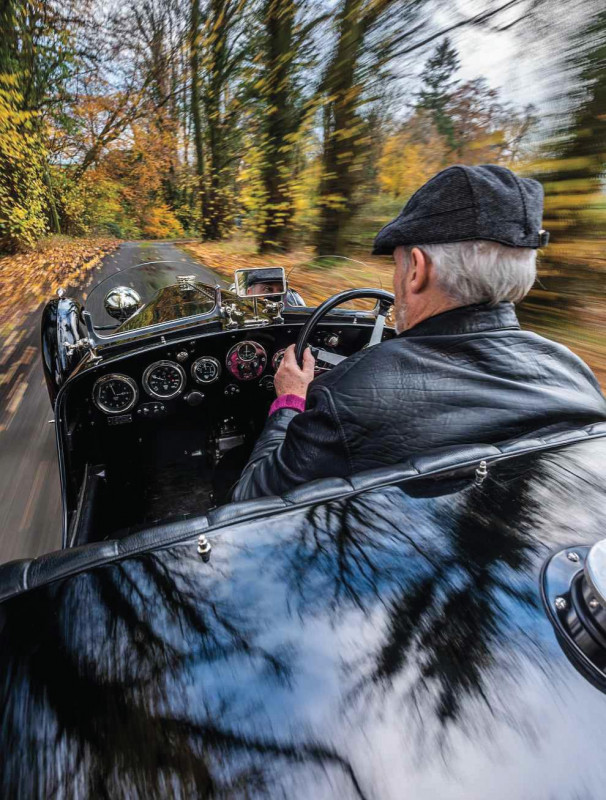
It’s no coincidence that Russell, like FW Bond, is also a Yorkshireman. In fact, it’s the Brighouse connection that impelled him to buy the Bond. ‘While I’ve owned lots of fast modern cars, I’d never bought a vintage car, and I really wanted someone to hold my hand. I’d gone to look at an Alvis 12/60 that Tom was selling, but Tom insisted on taking me out in the Bond – and then I found out that it had been built within 250 yards of where my wife and I were living when we got married. The clincher was that in 1957 it was registered to the street in Leeds where my parents lived!
‘So, over soup and a coffee in Tom’s homely office, with the log fire burning – it was a cold day – we had a discussion, and I ended up spending more than I would have done on the Alvis. But it just felt right.’
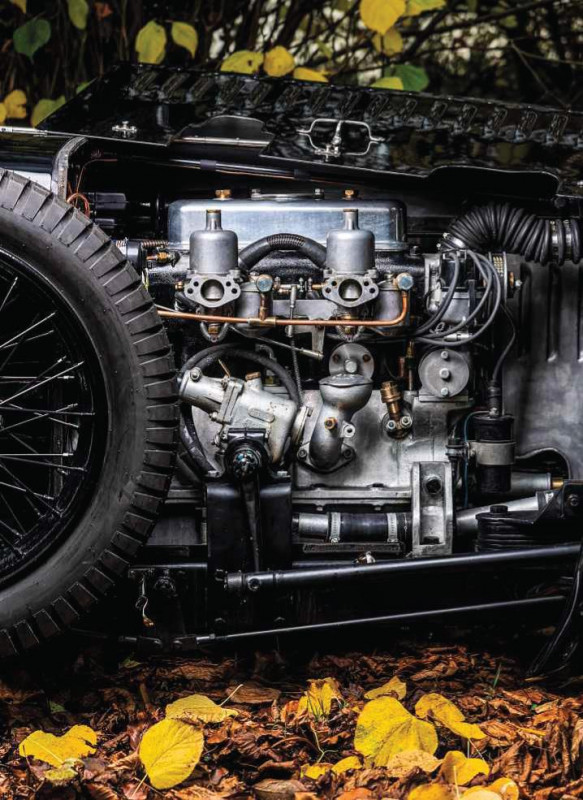
Russell made the correct decision. The Bond looks stunning, fully the equal of a contemporary Frazer Nash or Lea-Francis (or, to some eyes, a Bugatti). Like many Nashes or LeaFs, it has a 1.5-litre Meadows engine, which in the case of number seven originally had a Cozette supercharger but now simply breathes through twin SU carburettors. It was painted a bright ‘Campbell blue’ with black wheels during the Captain’s brief tenure, and this was the colour scheme it was returned to during John Sawyer’s restoration, but it has recently been refinished in the all-over black that Bond number six was supplied in.
It’s thanks to John Sawyer that we know most of what we know about Bonds. The Depression and a lack of orders forced FW Bond to abandon his car manufacture in 1928 and close the garage. He ended up working for big car insurance firms, and died in January 1943, aged just 53.
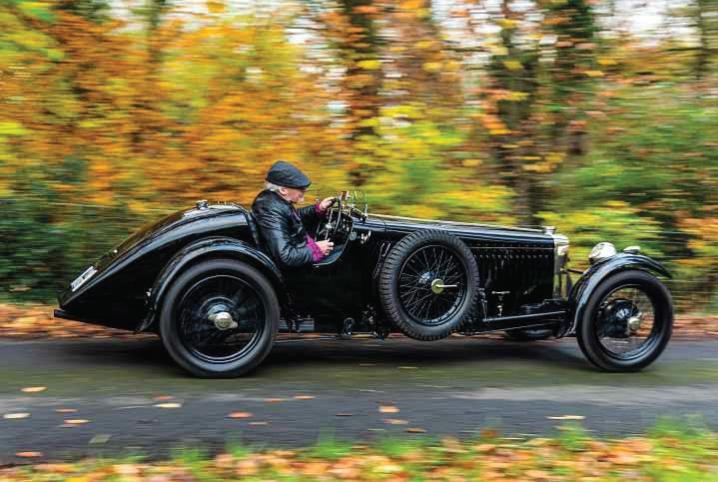
So, when Sawyer acquired his car in 1967, he started writing to everyone he could think of who might have information. A plea for information published in the Brighouse Echo in August 1968 brought responses from many locals. Among them was FW Bond’s widow, Theresa, and one of her daughters, Betty – who would become lifelong friends; plus the son of the chauffeur who drove two Bonds that were owned by FW’s principal backer, a local mill owner called GA Topham.
FW himself comes across as an ambitious but ultimately disappointed character. Born in Brighouse in 1890, he joined local commercial vehicle builders Clayton and Co as a youngster, before serving in Egypt during World War One, in charge of repairing vehicles. After demob in 1919 he rejoined his old firm, which was renamed Karrier Motors Ltd in 1920, and carried on working there even as he made plans to build a car bearing his own name.
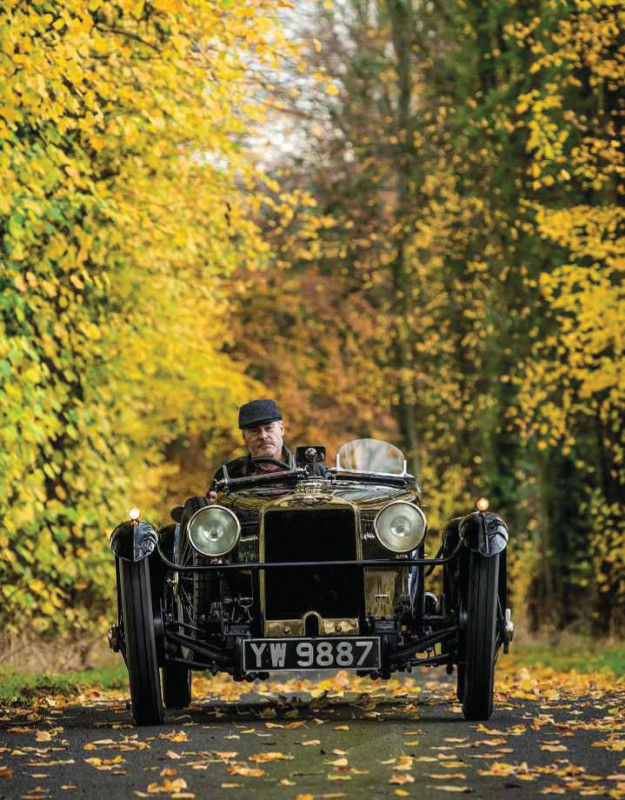
His prototype was a simply styled but substantial two-seater roadster with dickey, powered by a 2.3-litre, four-cylinder Tylor engine. It reputedly ended its days converted to a tractor on a local farm, but it convinced the aforementioned GA Topham to commission a bigger four-seater tourer from FW, with a 3.25-litre Continental ‘six’. This was followed by an order from a visiting Australian carmaker called Clarence Chick for a large Meadows-engined chassis. It served as the prototype for the Aussie-built Chic, and is believed to be the chassis now in Australia’s Birdwood Museum.
Further orders trickled in. There was a special for the Brooklands competitor Felix Scriven, with a rare Sage six-cylinder engine – the car was dubbed Mother Goose because, of course, it was ‘stuffed with Sage’. Soon rebuilt, re-engined and renamed Nanette, it’s owned today by collector Julian Mazjub. Then there was another four-seater tourer for a local councillor, and a second commission from GA Topham for an imposing Pullman landaulette.
Bond must have felt confident enough to leave Karrier by then, and moved out of his rented workshop to his own premises: a 62ft x 22ft corrugated-iron shed in Rastrick, on the outskirts of Brighouse. Sadly, this substantial and tangible relic of the Bond marque was only demolished in the early 1980s.
And so FW could get down to building what he surely always wanted to build: sports cars. The first 1.5-litre roadster sold through Capt Campbell was, ironically, to local Brighouse man Mr Briggs. It was the fifth Bond-badged road car, with an Anzani engine.
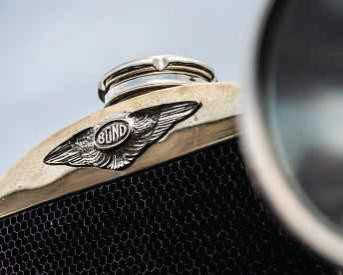
The sixth car, the one bought secondhand by Reg Bolton, had been purchased new by a Mr GP Palmer, who did some trialling in it. This car had the 1500cc Meadows engine and was similar to car number seven, our feature car. Unfortunately, number seven’s entire history from 1928 to 1957 is unknown. By then it had lost its original body and its supercharger, and was owned by a Mr PL Alvin.
John Sawyer made contact with the man who rescued it from Alvin, a Leo le Fevre, who wrote in 1968: ‘Mr Alvin had (to my mind) spoiled the car by a huge copper exhaust and many other ill-conceived mods. I heard that he was going to put in a Ford V8 after he had catapulted a rod through the Meadows block – and this was enough for me to buy her immediately for too high a price just to rescue her!’ He went on to say: ‘I am rather sad that the car has been so neglected and abused after I spent so much time on it – it was really a very beautiful car when I sold it.’
That was in 1960, and the Bond passed through three further keepers before finding a home with John Sawyer in 1967. The ensuing restoration wasn’t finished until 2000 – exactly 40 years since it had last been on the road.
Had he kept the car, Sawyer intended to reinstate the Cozette supercharger originally fitted. However, it’s fair to say that, following a complete engine rebuild by the wizards at Blakeney Motorsport in 2019, it absolutely doesn’t need it. The dyno readings show that the 1500 Meadows now puts out twice as much power as an unblown original did in 1928.
‘You sit low, feeling quite the dashing young blade – whatever the truth may be’
First impressions are of a quality car, well equipped with plenty of dials and gauges and lots of nickel-plated brightwork. As usual, the cockpit’s a tight squeeze for anyone with a ‘modern’ build, and the pedals are close-set, so you’ll need narrow shoes to operate them individually, rather than two at once. But at least the throttle is in the conventional position, on the right-hand side.
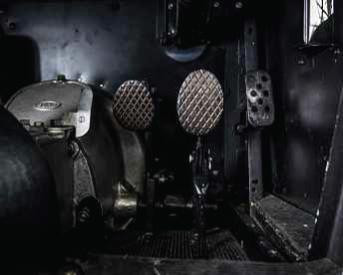
You sit low, feeling quite the dashing young blade (whatever the truth may be) in this glamorous roadster, its long bonnet stretching away before you. Fire up the Meadows and it crackles into life hungrily; ease off down the road and the gearchange – also conventional in layout, except that the first-second plane is nearest to you – proves slick and easy: a straight pull into second, a much longer one across and up into third that’s smoothed by a brief double-declutch, and a leisurely straight pull back into fourth. The car rides well, too, feeling controlled but not at all harsh or jiggly.
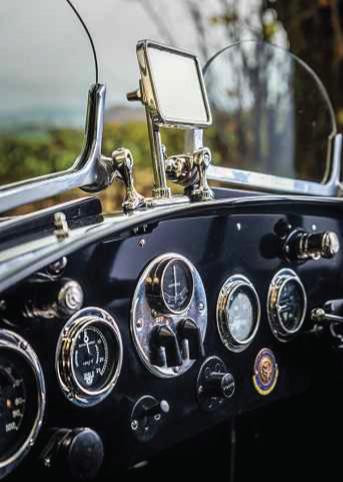
With the fluids warm through, you can give the engine some exercise. Built to modern tolerances, it will rev safely to 6000rpm and it’s more than happy to do so, accompanied by a thrilling hammer-beat of an exhaust as the needle rushes up past 3000. It’s so rev-happy, so quick to respond, that I seriously wonder whether adding a supercharger would give you enough time to shift through the gears.
The car just feels happier the faster you go, too, because the steering loses any low-speed vagueness and seems to tighten up – there’s no need, as Russell puts it, to ‘chew’ at the steering wheel as you might do at lower velocities. The Bond is like a living, breathing entity, which of course is what makes it so rewarding to drive – and with 100bhp to propel maybe 600kg, tail-out slides are always there for the asking.
It’s hard not to make comparisons with a similarly quick Frazer Nash but, while the Nash has more enthusiast cachet and an even more racey character, the Bond feels a notch above in quality. Think of it as a Nash for gentlemen, at two-thirds the price. Russell bought well.
TECHNICAL DATA 1928 Bond 1.5-litre Super Sport
- Engine 1496cc Meadows 4ED OHV four-cylinder, two Zenith carburettors (this car: twin SUs), optional supercharger
- Max Power 101bhp @ 5500rpm (this car)
- Max Torque 104lb ft @ 4600rpm (this car)
- Transmission Four-speed manual, rear-wheel drive
- Steering Marles hourglass-and-roller
- Suspension Front and rear: beam axles (live rear), quarter-elliptic leaf springs, torque reaction arms at front, lever-arm dampers Brakes Drums, rod-operated
- Top speed c80mph (original spec; this car estimated >90mph)
- THANKS TO Russell Croisdale, Tom Hardman at tomhardman.com, and Lawrence Whittaker.
Above and left Tuned 1.5-litre Meadows engine gives the Bond exciting performance in keeping with its rakish lines; black paint is enlivened by extensive nickel-plated brightwork. From facing page Jarvis coachwork had to be recreated from scratch; dashboard houses boost gauge for long-gone supercharger; Bond is lively but quite comfortable on the road.


